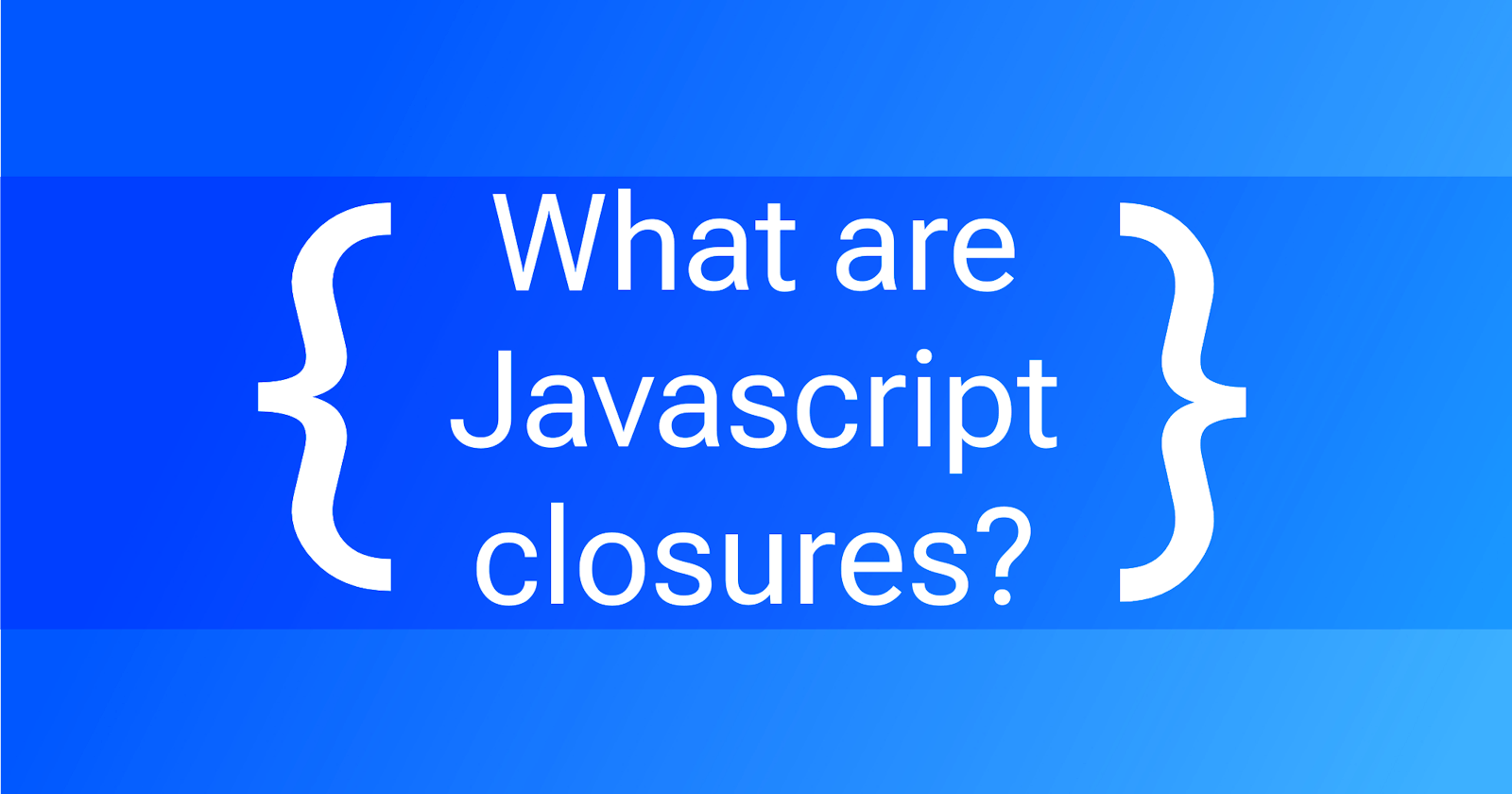Closures are one of the most powerful and often misunderstood concepts in JavaScript. They play a crucial role in creating efficient, maintainable, and expressive code. In this detailed guide, we'll explore what closures are, why they are essential, their practical uses, and crucial points to remember, especially during interviews.
Understanding Closures:
In JavaScript, closures occur when a function is declared within another function and retains access to the outer function's variables even after the outer function has finished executing. This lexical scope behavior allows functions to "close over" their surrounding scope, hence the term "closure."
Why Use Closures?
Closures offer several advantages:
Data Encapsulation: Closures enable the creation of private variables and methods within functions. This encapsulation ensures that internal state remains inaccessible from outside the function, promoting better code organization and reducing the risk of unintended modifications.
Maintaining State: Closures allow functions to maintain state between multiple invocations. This is particularly useful in scenarios where you need to track the history of operations or maintain context across asynchronous operations.
Functional Programming: Closures are fundamental to functional programming paradigms in JavaScript. They facilitate the creation of higher-order functions, enabling techniques like currying, partial application, and function composition.
Uses of Closures:
Let's explore some real-world examples:
- Example 1 : Private Variables
function createCounter() {
let count = 0;
return function() {
return ++count;
};
}
const counter = createCounter();
console.log(counter()); // Output: 1
console.log(counter()); // Output: 2
In this example createCounter returns a function that increments the count each time it is called. Count cannot be accessed directly from outside.
- Example 2 : Event Handling
function handleClick() {
let count = 0;
return function() {
console.log(`Button clicked ${++count} times`);
};
}
const button = document.querySelector('button');
button.addEventListener('click', handleClick());
Here, handleClick returns a function that logs the number of times a button is clicked. The count variable maintains its state across multiple invocations
- Example 3 : Memoization
function memoize(func) {
const cache = {};
return function(...args) {
const key = JSON.stringify(args);
if (!cache[key]) {
cache[key] = func(...args);
}
return cache[key];
};
}
const fibonacci = memoize(function(n) {
if (n <= 1) return n;
return fibonacci(n - 1) + fibonacci(n - 2);
});
console.log(fibonacci(10)); // Output: 55
In this example, memoize caches the results of expensive function calls, such as the Fibonacci sequence calculation. Subsequent calls with the same arguments retrieve the result from the cache which improves performance.
IMP points about Closures in Interviews:
Lexical Scope: Closures have access to variables defined in their outer lexical scope, even after the outer function has returned.
Memory Management: Closures retain references to their outer scope variables, potentially leading to memory leaks if not handled properly, especially in long-lived closures.
Late Binding: Closures capture variables by reference, resulting in late binding behavior. This means that if the outer variable changes after the closure is created, the closure will use the updated value.
Garbage Collection: Closures prevent their variables from being garbage-collected as long as the closure itself is reachable. It's essential to be mindful of memory consumption, especially in scenarios where closures are frequently created.
Performance Considerations: While closures offer powerful capabilities, excessive closure creation can impact performance. It's essential to strike a balance between using closures for encapsulation and avoiding unnecessary overhead.
Summary
Closures are a fundamental concept in JavaScript that empowers us to write cleaner, more expressive, and efficient code. By understanding how closures work, their practical uses, and key considerations, we can leverage them effectively to solve complex problems and build robust applications.
